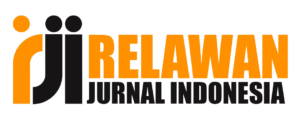Implementation of the K-Means Clustering Method in Salt Production Area Grouping Applications
DOI:
https://doi.org/10.30812/bite.v5i1.2690Keywords:
Garam, Pengelompokan, K-MeansAbstract
Background: Indonesia has a large land and sea area that has the potential for salt production. Efforts to increase salt production are still not optimal because there are still several areas that produce salt products in small quantities even though they have a large land area and a large number of farmers, so for areas like this, it is necessary to carry out guidance so that they can increase the amount of salt production. So far, no system has been used to group salt-producing regions, so it is impossible to know which areas still have the potential to increase their production. Objective: This research aims to create an application system to classify salt-producing regions.
Methods: The clustering method used is K-Means, where this method can group datasets into several predetermined clusters.
Result: The results of application testing carried out using 10 salt-producing region datasets obtained 4 regions with small production volume clusters, 3 regions with sufficient production volume clusters, 3 regions with large production volume clusters.
Conclusion: The application of grouping salt-producing areas using the K-Means method can help the process of grouping salt-producing regions easier, faster, and more objectively.
Downloads
References
[2] F. Indriyani and E. Irfiani, “Clustering Data Penjualan pada Toko Perlengkapan Outdoor Menggunakan Metode K-Means,†JUITA : Jurnal Informatika, vol. 7, no. 2, pp. 109–113, nov 2019. [Online]. Available: https://jurnalnasional.ump.ac.id/index.php/JUITA/article/view/5529
[3] J. Hutagalung and F. Sonata, “Penerapan Metode K-Means Untuk Menganalisis Minat Nasabah,†Jurnak Media Informatika Budidarma, vol. 5, no. 3, pp. 1187–1194, jul 2021. [Online]. Available: http://www.ejurnal.stmik-budidarma.ac.id/index.php/mib/article/view/3113
[4] R. Rosmini, A. Fadlil, and S. Sunardi, “Implementasi Metode K-Means Dalam Pemetaan Kelompok Mahasiswa Melalui Data Aktivitas Kuliah,†IT Journal Research and Development, vol. 3, no. 1, pp. 22–31, aug 2018. [Online]. Available: https://journal.uir.ac.id/index.php/ITJRD/article/view/1773
[5] M. N. V. Waworuntu and M. F. Amin, “Penerapan Metode K-Means untuk Pemetaan Calon Penerima Jamkesda,†KLIK - Kumpulan Jurnal Ilmu Komputer, vol. 5, no. 2, pp. 190–200, sep 2018. [Online]. Available: http://klik.ulm.ac.id/index.php/klik/article/view/157
[6] S. Sugiono, S. Nurdiani, Linawati Safitri, R. A. Safitri, and E. P. Saputra, “Pengelompokan Perilaku Mahasiswa Pada Perkuliahan E-Learning dengan K-Means Clustering,†Jurnal Kajian Ilmiah, vol. 19, no. 2, pp. 126–133, may 2019. [Online]. Available: http://jurnal.ubharajaya.ac.id/index.php/ kajian-ilmiah/article/view/410
[7] M. Mardalius, “Pemanfaatan Rapid Miner Studio 8.2 Untuk Pengelompokan Data Penjualan Aksesoris Menggunakan Algoritma K-Means,†JURTEKSI, vol. 4, no. 2, 2019.
[8] R. P. Andriyani, Suadi, and S. S. Djasmani, “Analisis Usaha Tambak Garam Di Desa Gedongmulyo Kecamatan Lasem Kabupaten Rembang,†Analisis Usaha Tambak Garam Di Desa Gedongmulyo Kecamatan Lasem Kabupaten Rembang, vol. 15, no. 2, 2019.
[9] N. K. Surbakti, “Data Mining Pengelompokan Pasien Rawat Inap Peserta BPJS Menggunakan Metode Clustering (Studi Kasus : RSU.Bangkatan),†JITU - Journal of Information and Technology Unimor, vol. 1, no. 2, pp. 47–53, aug 2021. [Online]. Available: http://jurnal.unimor.ac.id/index.php/JITU/ article/view/1470
[10] M. Simanjuntak, “Penerapan Data Mining Pengelompokan Kejahatan Elektronik Sesuai UU ITE dengan Menggunakan Metode Clustering,†Jurnal Mahajana Informasi, vol. 3, no. 2, pp. 19–25, 2018. [Online]. Available: http://e-journal.sari-mutiara.ac.id/index.php/7/article/view/413
[11] Y. Miftahuddin, S. Umaroh, and F. R. Karim, “Perbandingan Metode Perhitungan Jarak Euclidean, Haversine, dan Manhattan dalam Penentuan Posisi Karyawan (Studi Kasus: Institut Teknologi Nasional Bandung),†Jurnal Tekno Insentif, vol. 14, no. 2, pp. 69–77, aug 2020. [Online]. Available: https://jurnal.lldikti4.or.id/index.php/jurnaltekno/article/view/270
[12] M. Mughnyanti and S. H. N. Ginting, “Data Mining Manhattan Distance dan Euclidean Distance Pada Algoritma X-Means Dalam Klasifikasi Minat dan Bakat Siswa,†REMIK: Riset dan E-Jurnal Manajemen Informatika Komputer, vol. 7, no. 1, pp. 835–842, jan 2023. [Online]. Available: https://polgan.ac.id/jurnal/index.php/remik/article/view/12162
[13] S. Aulia, “Klasterisasi Pola Penjualan Pestisida Menggunakan Metode K-Means Clustering (Studi Kasus di Toko Juanda Tani Kecamatan Hutabayu Raja),†Djtechno: Jurnal Teknologi Informasi, vol. 1, no. 1, pp. 1– 5, jun 2020. [Online]. Available: https://jurnal.dharmawangsa.ac.id/index.php/djtechno/article/view/964
[14] S. P. Tamba, F. T. Kesuma, and F. Feryanto, “Penerapan Data Mining Untuk Menentukan Penjualan Sparepart Toyota dengan Metode K-Means Clustering,†Jurnal Sistem Informasi dan Ilmu Komputer Prima (JUSIKOM PRIMA), vol. 2, no. 2, pp. 67–72, aug 2019. [Online]. Available: http://jurnal.unprimdn.ac.id/index.php/JUSIKOM/article/view/376
[15] R. Supardi and I. Kanedi, “Implementasi Metode Algoritma K-Means Clustering pada Toko Eidelweis,†(JurTI) Jurnal Teknologi Informasi, vol. 4, no. 2, pp. 270–277, dec 2020. [Online]. Available: http://jurnal.una.ac.id/index.php/jurti/article/view/1444














